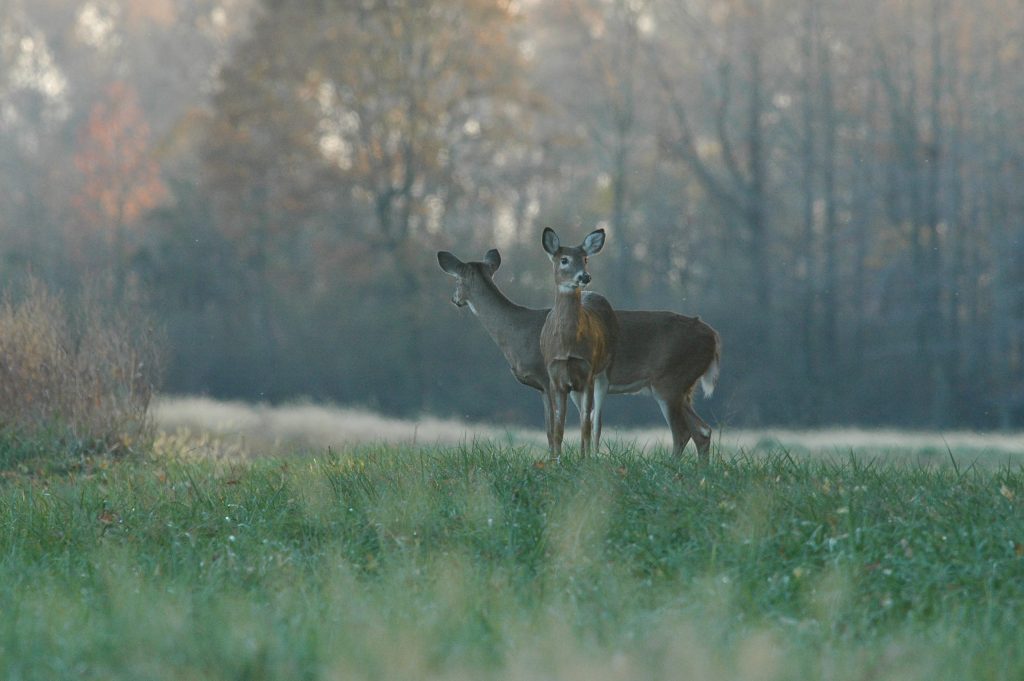Moon, rain, wind, temperature – we’ve looked at them all when it comes to how they might affect the rut.
Conclusion: They don’t.
The timing of the rut is based on when does come into estrous and that is based on day length. Hunters continually focus on bucks when it comes to the rut. As a biologist (and a woman), it’s kind of annoying.
However, it does take two to tango. So what if we implemented something that manipulated the buck population on a large scale? Could that change the rut?
In 2002, Pennsylvania made substantial changes to deer management regulations for the first time in decades. The most notable was an increase in antler point restriction from 3 inches on one side to 3 points on one side (or 4 depending on the Wildlife Management Unit).
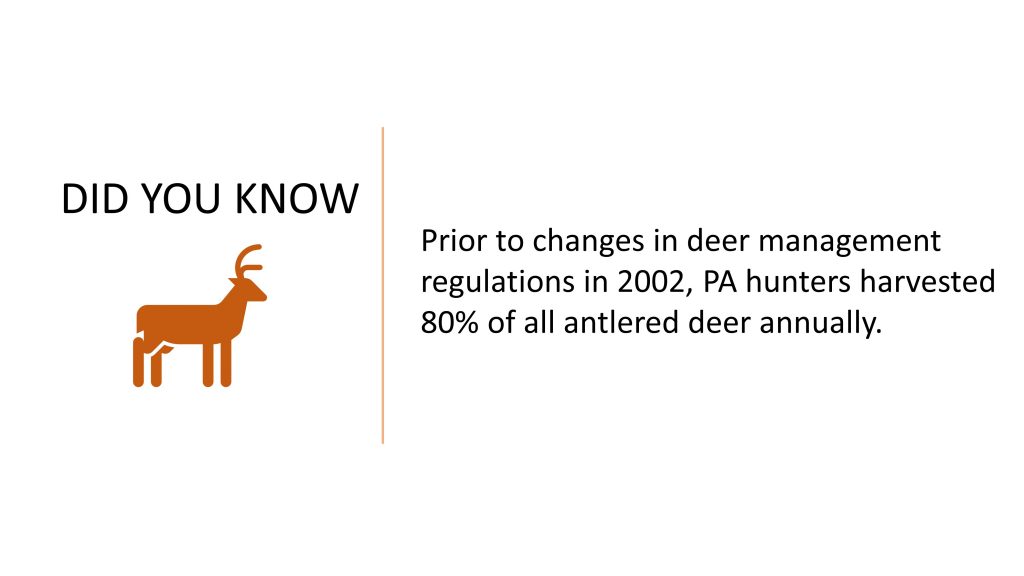
For 80 years, Pennsylvania hunters harvested about 80% of all antlered deer annually. Each year those antlerless button bucks would sprout antlers, dominate breeding, and be harvested during the gun season. There were 3.7 yearlings for every 2.5-year-old or older buck. One thing 8 decades of this should teach us – yearling bucks can get the breeding done.
There were questions surrounding this breeding system, however. With the female-biased sex ratios, was breeding delayed because there were just too many females in estrous at the same time and not enough bucks (yearling or otherwise) to fill the demand? This could affect breeding synchrony and maybe flatten that peak.
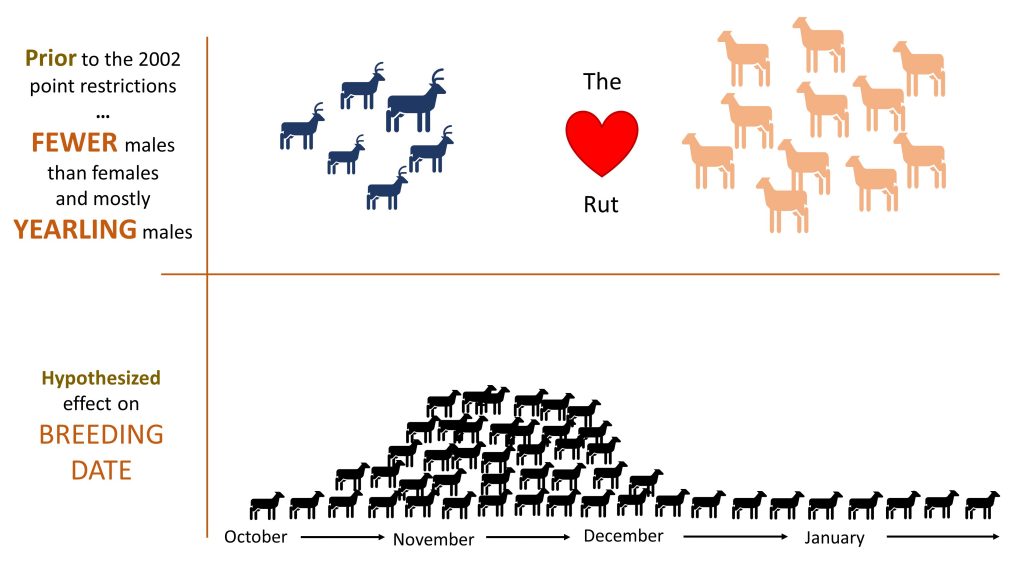
With the new antler point restriction, the number and age of antlered deer would increase. Would more and more experienced bucks get the job done more efficiently? Would the peak be higher and tighter?
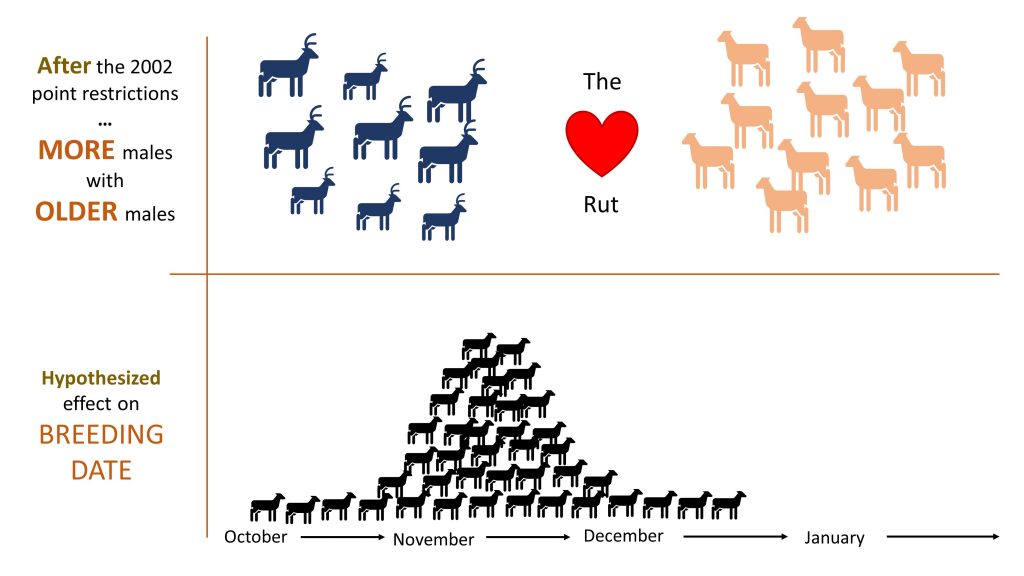
If there is one thing Pennsylvania has it’s data. Last year, Duane with a few other Pennsylvania homies, looked to see if increasing the number and proportion of older bucks in the population would affect breeding behavior.
So have antler point restrictions (and the addition of older bucks) made the rut more intense over a shorter period of time?
No changes in timing or synchrony of breeding were detected!
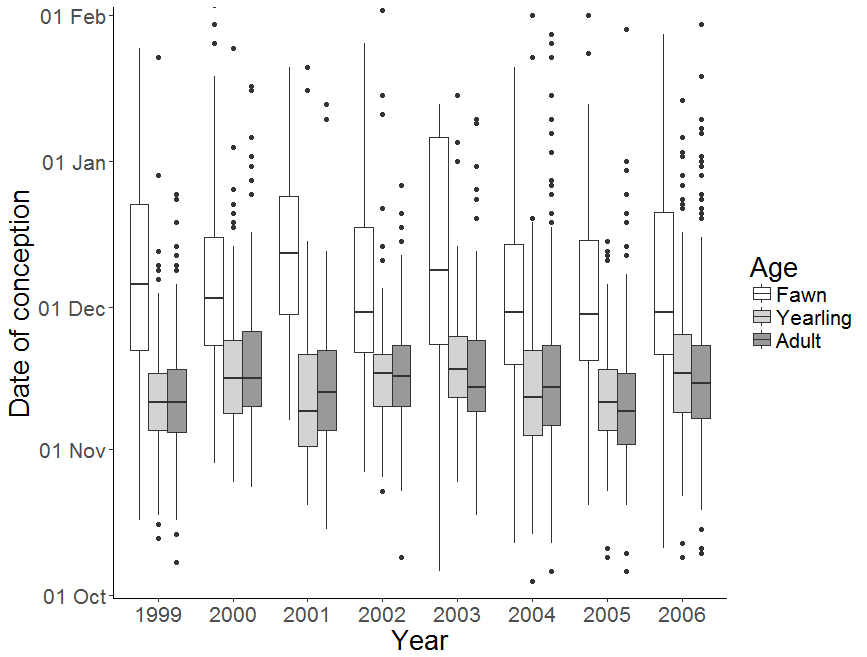
You know that story about the old bull and the young bull. Well, guess what? Running or walking makes no difference. Old or young – all bucks participate in breeding with the same percentage of does being bred over the same period of time.
We all know who controls the timing of the rut. It’s high time everybody acknowledges the supreme status of the doe.
Timing of breeding is predicated on optimal birth date for fawns. Not too early (too cold for babies) and not too late (need to fatten up before winter) to maximize survival. Female investment in reproduction is high with a 200-day gestation period and 8 weeks of lactation. She is the linchpin to rut timing.
Old bucks, young bucks – makes no difference. The timing of breeding will remain the same. All old bucks do is make hunters happy. Which is fine, but we know who run the world.
–Jeannine Fleegle
Wildlife Biologist
PGC Deer and Elk Section
Graphics by Tess Gingery
